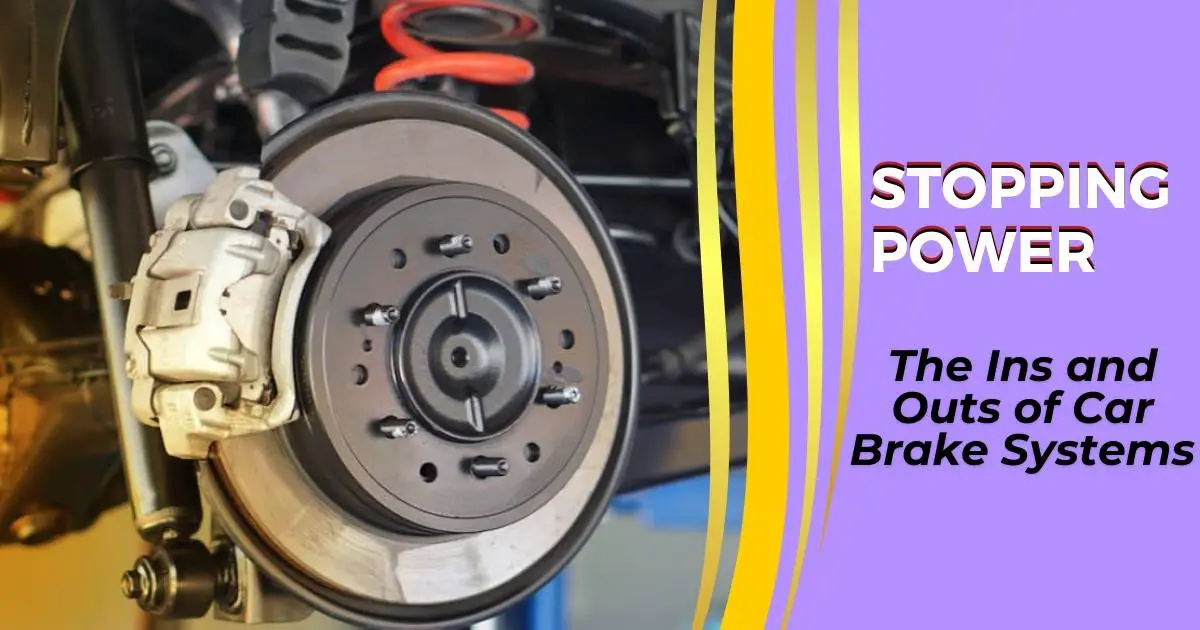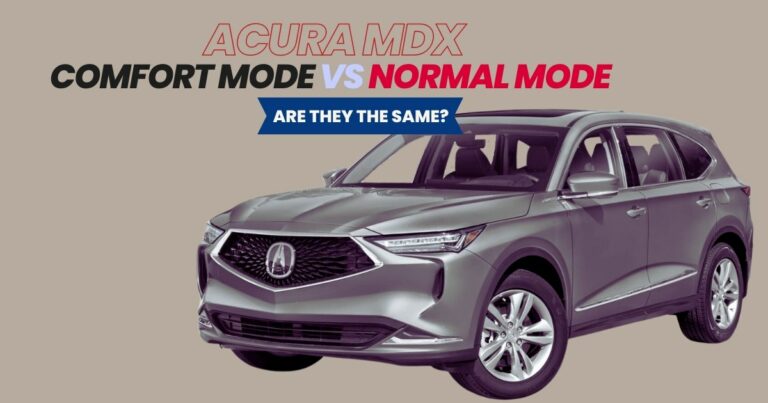Stopping Power: The Ins and Outs of Car Brake System
The brake system serves as the primary safety system in any motor vehicle. Ideally, a properly functioning brake system allows the drivers to navigate and bring their cars to a stop in a controlled manner. The brakes also enables drivers to manage their speed and respond to different driving conditions.
If you are curious to understand the ins and outs of a car brake system, you’re in the right place. In this guide, we’ll break down everything you need to know about slowing or stopping your vehicle and its significance to your safety and the overall performance of your ride.
Overview of the Braking Process
The braking process starts with the driver pressing the brake pedal. This action triggers the generation of hydraulic pressure within the brake system. The hydraulic pressure is then transmitted to the calipers, which are located near the wheels. In response to this pressure, the calipers activate, initiating a mechanical process that engages the braking system.
The activated calipers then exert force on the brake pads. The brake pads, in turn, make contact with the rotating rotors attached to the vehicle’s wheels. This action generates friction, which is used to transform the kinetic energy generated by the moving vehicle into heat. The cumulative effect of hydraulic pressure, caliper activation, and friction makes the vehicle decelerate and ultimately come to a stop.

Components of the Brake System
Brake Pedal
The brake pedal serves as the primary interface between the driver and the brake system. The driver applies force to the brake pedal, which signals the brake system to engage and initiate the necessary mechanisms for decelerating or bringing the vehicle to a complete stop.
Brake Booster
The brake booster, just as the name suggests, augments the force applied to the brake pedal. The booster utilizes a vacuum to assist in brake actuation, which, in turn, reduces the physical effort required from the driver to achieve effective braking.
Brake Fluid
Brake fluid is a specialized hydraulic fluid that serves as the medium for transmitting force from the driver’s brake pedal to the braking components. Brake fluid operates within a closed system to facilitate responsive and controlled braking. The brake fluid also helps to lubricate and prevent corrosion.
Brake Rotor
The brake rotor, or disc, is a rotating metal disc connected to the wheel in disc brake systems. The disc provides a surface for the brake pads to grip and create friction. This friction is essential for slowing down or bringing the vehicle to a complete stop.
Brake Caliper
The brake caliper is a crucial component of the braking system, and its primary function is to house the brake pads and pistons. When you apply the brakes, hydraulic pressure is used to push the pistons, which, in turn forces the brake pads against the brake rotor. This creates friction, which slows down or stops the rotation of the wheels.
Master Cylinder
The master cylinder is the braking component that converts the mechanical force from the brake pedal into hydraulic pressure. This pressure is then transmitted through the brake fluid to actuate the brake components.
Wheel Cylinder
The wheel cylinder is used in drum brake systems to convert hydraulic pressure from the master cylinder into mechanical force. This force is then applied to the brake shoes, making them press against the brake drum to initiate braking.
Brake Shoe
A brake shoe is a curved metal piece typically lined with friction material on its outer surface. Brake shoes are located inside the brake drum. When you apply the brakes, the wheel cylinder forces the shoe against the inner surface of the drum, creating friction to slow down or stop the vehicle.
Types of Brake Systems
Drum Brakes
Drum brakes are a type of braking system that utilizes friction created by a set of shoes or pads that press outward against a rotating bowl-shaped component known as a brake drum. This braking system comes in a cylindrical-shaped housing that is attached to the wheel and rotates along with it.
When the driver applies brakes, the friction between the brake shoes and the inner surface of the drum helps to slow down or stop the rotation of the wheel. This design allows for effective braking as the shoes make contact with a larger area of the drum.
Drum brakes are common in older vehicles, but you can still use them today, especially in the rear wheels. However, many modern cars now use disc brakes in the front for improved performance, while some still retain drum brakes in the rear.
Pros
- Generally more straightforward in terms of initial installation.
- The compact design is often favored in rear brake configurations.
- The enclosed design of drum brakes helps protect the braking components from environmental elements.
Cons
- Prone to heat buildup.
- Requires timely maintenance.
Disc Brakes
Disc brake is a type of braking system that operates by using calipers to squeeze pairs of brake pads against a disc or rotor. This process generates friction, which helps to convert the kinetic energy of motion into heat, ultimately slowing down or stopping the wheel rotation.
The design of disc brakes contributes to better-stopping power, making them suitable for high-speed braking. Disc brakes are widely used in modern vehicles, especially on the front wheels, due to their superior heat dissipation capabilities and overall braking performance.
Pros
- Enhanced heat dissipation, which helps reduce the risk of brake fade.
- Disc brakes are typically more efficient in heat dissipation, making them suitable for high-performance applications.
- Easier and quicker to service and maintain.
Cons
- Initial installation and maintenance costs can be higher.
- Vulnerable to water and debris.
Signs of Brake System Problems
Most car accidents happening today are often as a result of driver error but, a substantial percentage is attributed to brake failure. While practicing safe driving is essential, ensuring the proper functioning of your brakes, is equally critical. Here are several indicators of compromised brake safety;
Squeaking or Grinding Noises
Squeaking or grinding noises when applying the brakes suggest potential issues with worn brake pads or damaged brake components. The noise is often a result of the brake pad material wearing down or the pads making contact with worn-out rotors. If you experience squeaking or grinding noises when applying the brakes, you can start by inspecting the brake pads for wear. Fortunately, brake pads are relatively manageable when it comes to brake repairs.
Reduced Responsiveness
If you notice a delayed response or reduced effectiveness when pressing the brake pedal, it could be a sign of air in the brake lines, brake fluid leaks, or worn-out brake pads. Reduced responsiveness is characterized by a delayed reaction and diminished effectiveness when applying the brake pedal. This can reduce braking efficiency and compromise vehicle safety.
Vibration or Pulsation
A pulsating or vibrating sensation through the brake pedal while braking may suggest unevenly worn brake rotors or drums. This issue can affect braking performance and should be addressed promptly to prevent further damage and maintain the overall performance of the braking system.
Soft or Spongy Brake Pedal
A brake pedal that feels soft or spongy and depresses to the floor when pressed can be caused by either air in the brake lines or a brake fluid leak. Spongy/soft brake pedal can undermine the effectiveness of the braking system and compromise vehicle safety.
Dashboard Warning Light
The illumination of the brake warning light on the dashboard signals issues within the braking system. The warning light can indicate various problems, such as low brake fluid levels, brake pad wear, or malfunctions in the ABS. It is always a good idea to pay attention to the warning light and take the necessary action to maintain the integrity of the braking system.
Burning Smell
A burning odor while driving or after braking could be a sign of overheated brakes. This may be caused by dragging brake pads, a malfunctioning caliper, or other issues that need investigation.
Uneven Brake Pad Wear
If you observe uneven wear on your brake pads, with one side significantly more worn than the other, it signals a problem with the brake caliper and other related components. If left unaddressed it can result in imbalanced braking performance, uneven stress on other brake components, and reduced overall braking efficiency.
Fluid Leaks
Fluid leaks in the brake system pose a serious threat to its functionality. If you notice any signs of brake fluid leaks around the wheels or underneath the vehicle, it is often a symptom of a compromised brake line, a faulty brake caliper, or a deteriorating brake hose. Addressing fluid leaks is essential to prevent a loss of braking power and maintain the overall safety and effectiveness of the braking system.
Pulling to One Side
If your vehicle is pulling to one side when braking, it could be a sign of uneven brake pad wear, a stuck caliper, or issues with the brake fluid distribution. This problem can compromise handling and safety, making it unsafe to drive the vehicle.
Brake System Maintenance
Regular brake system maintenance is crucial for ensuring optimal performance and safety. Here are key tips to maintain your brake system;
- Examine your brake components for signs of wear, focusing on brake pads, rotors, and calipers. Check for uneven wear, damage, or any brake fluid leaks. Ensure you address any issues promptly to prevent further damage.
- Perform routine checks on brake fluid levels and quality. Low fluid levels or compromised brake fluid quality can significantly impact brake performance. Ensure the fluid is within recommended levels, and be on the lookout for any signs of contamination.
- Replace brake pads and rotors as recommended by your vehicle’s manufacturer. Worn-out pads and warped rotors can compromise braking efficiency and lead to unsafe driving conditions.
- Ensure brake calipers are functioning correctly. Check for sticking calipers, as they can cause uneven brake wear. Lubricate caliper slides and pins as part of routine maintenance.
- Bleed the brake system periodically to remove air bubbles and maintain proper brake fluid circulation. This helps prevent spongy brakes and ensures consistent braking performance.
- Rotate your tires regularly to ensure even wear across all four and enhance balanced braking. Uneven tire wear can disrupt the distribution of braking forces, possibly leading to pulling during braking.
- Aggressive driving, including abrupt acceleration and harsh braking, can strain the brake system and reduce its effectiveness over time. Drive smoothly and anticipate traffic changes to promote brake longevity. You may also want to maintain a safe following distance from the vehicle in front of you to allow for sufficient reaction time.
- Stay aware of road conditions that can affect braking performance. Wet, icy, or uneven surfaces require increased braking distances. Adjust your driving speed and style accordingly to ensure control in challenging conditions.
Final Remarks
A good braking system is characterized by its ability to provide reliable and consistent stopping power. This ensures safety and control for the driver, and, consequently, bringing the entire vehicle to a controlled stop. That said, regular maintenance and attention to key components contribute significantly to the overall effectiveness of the braking system.






